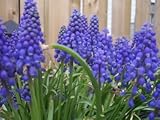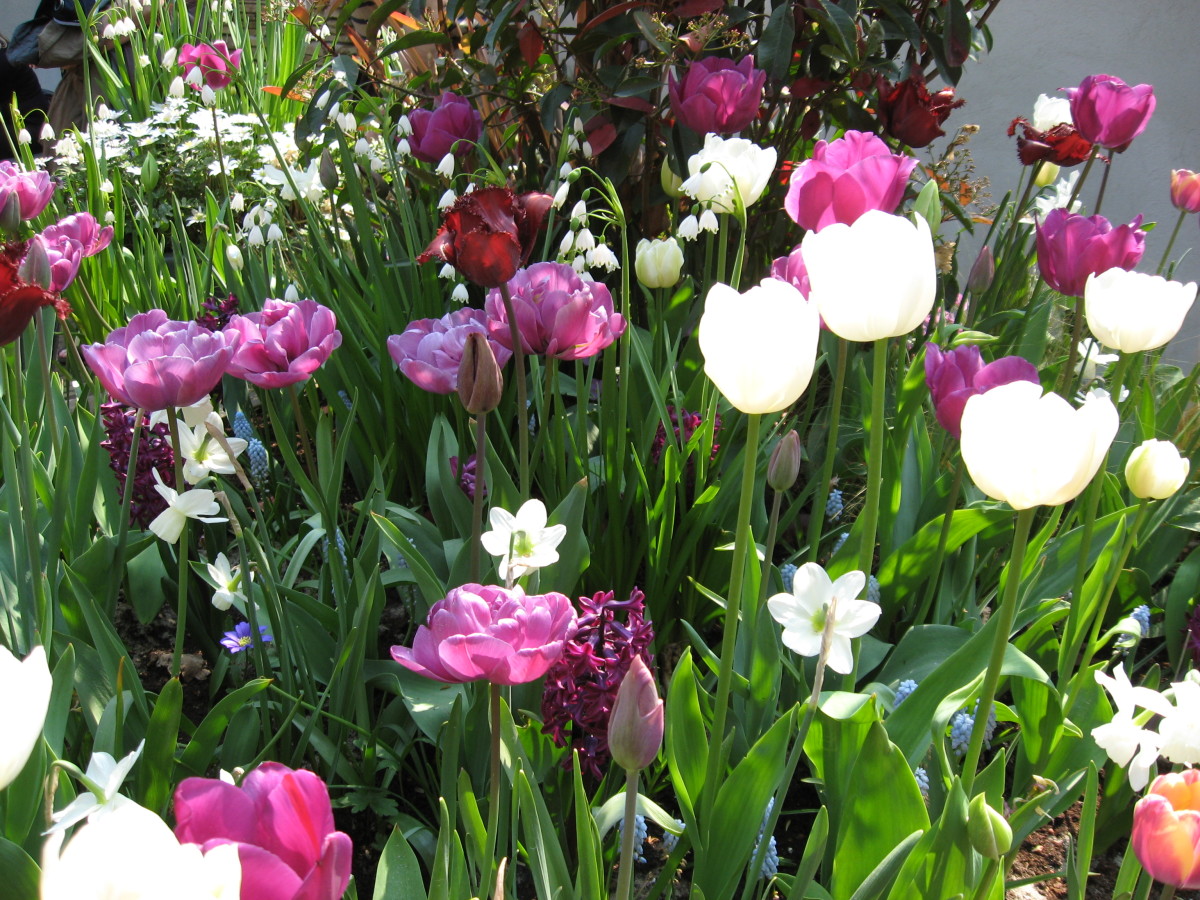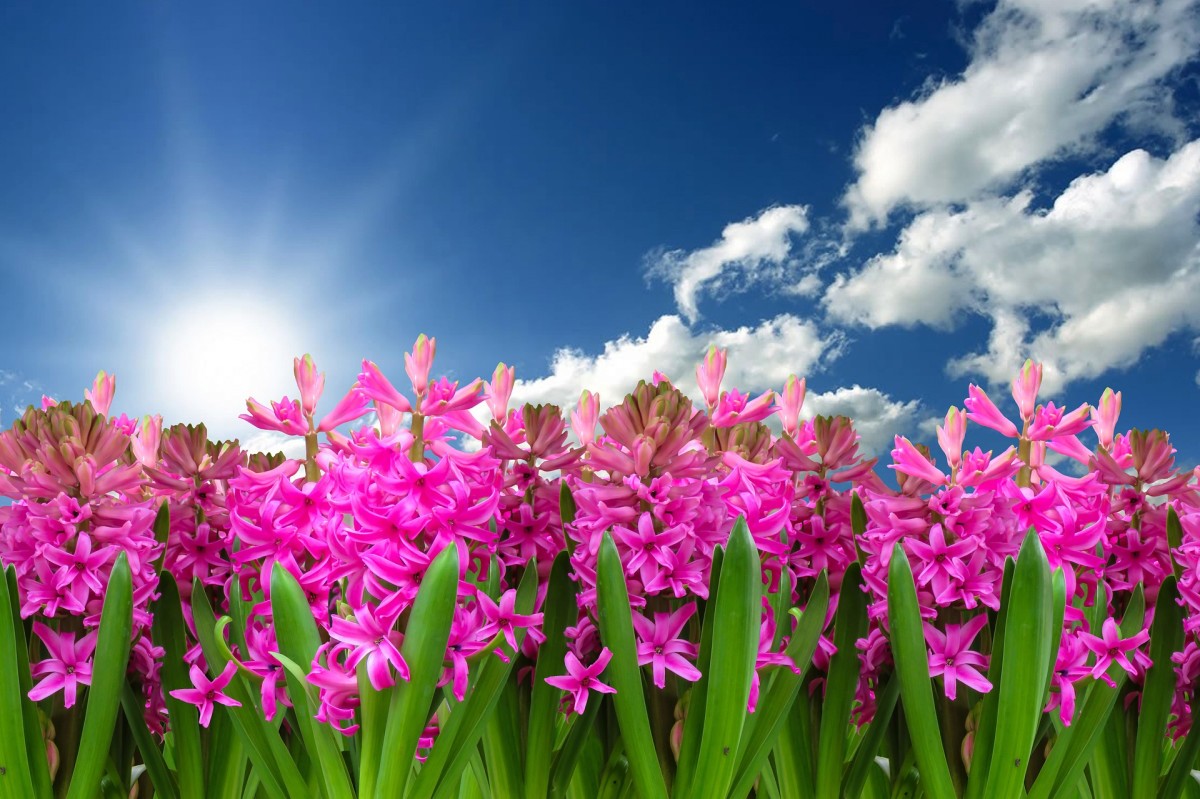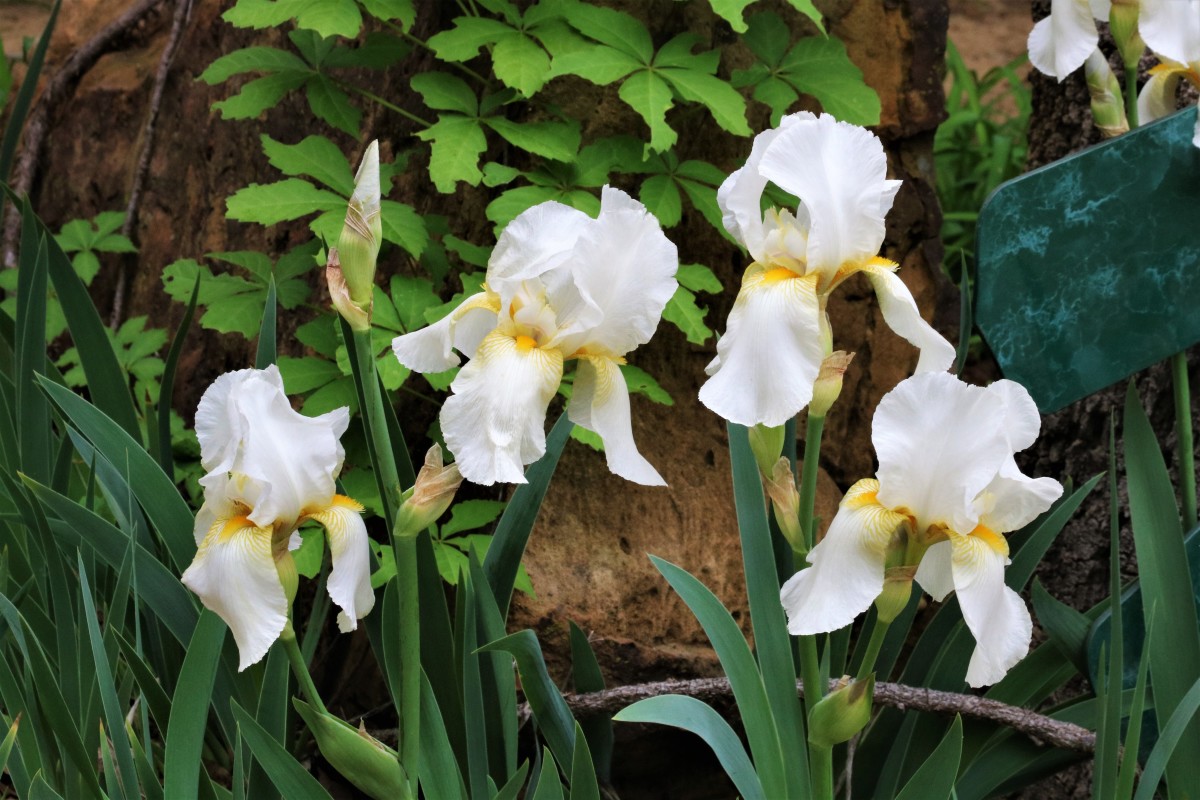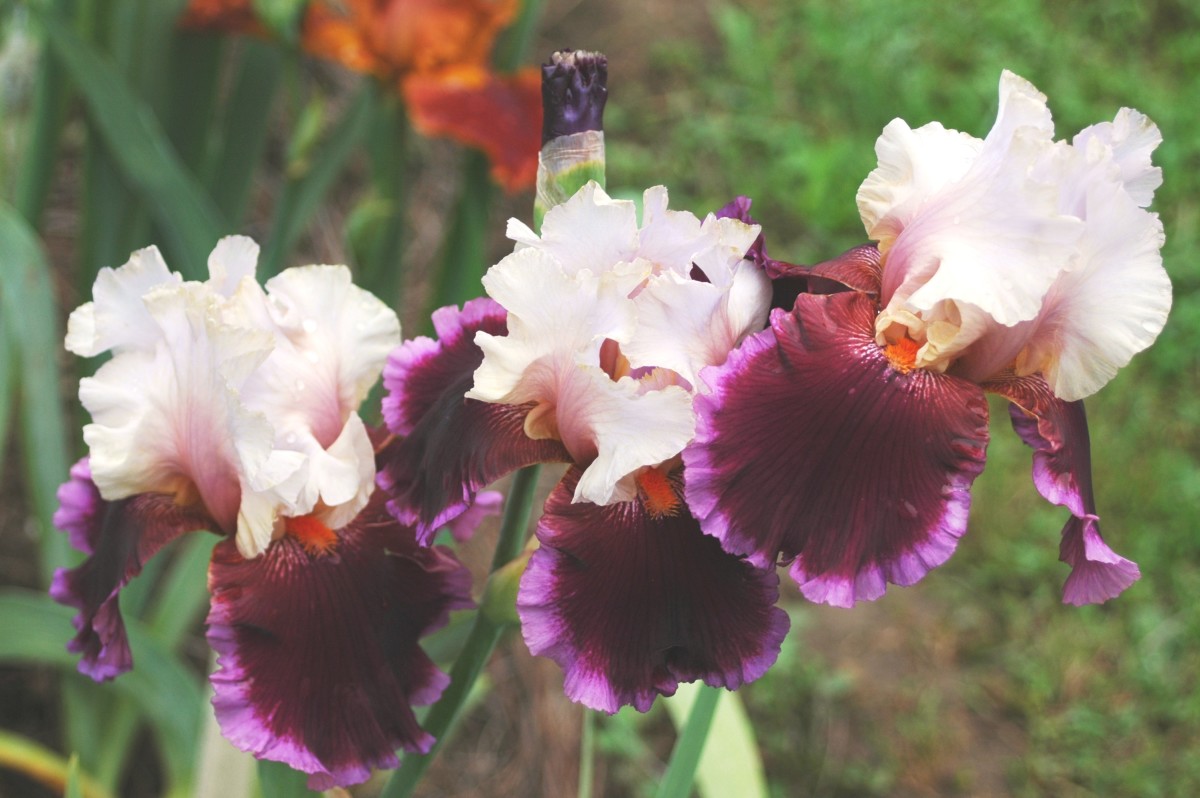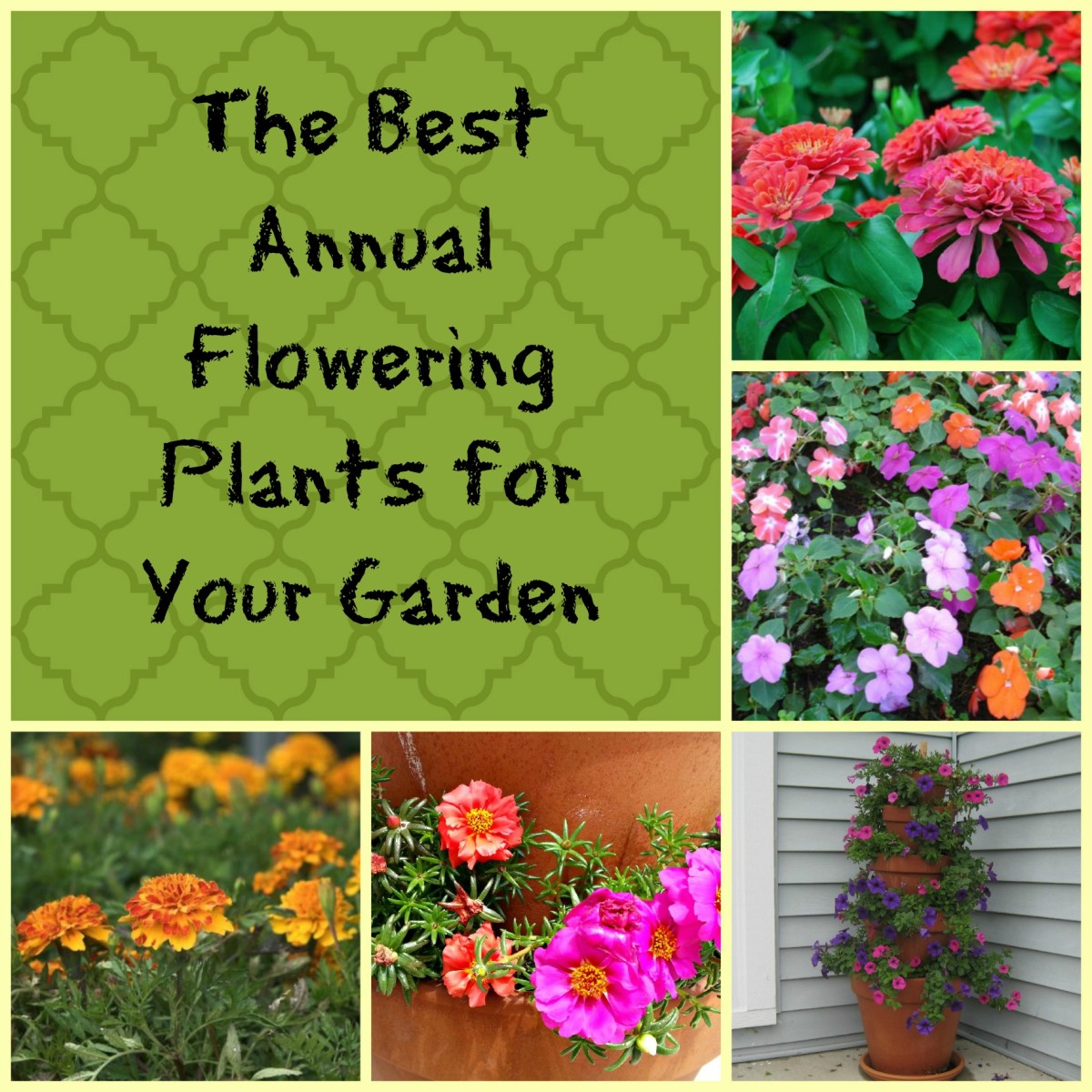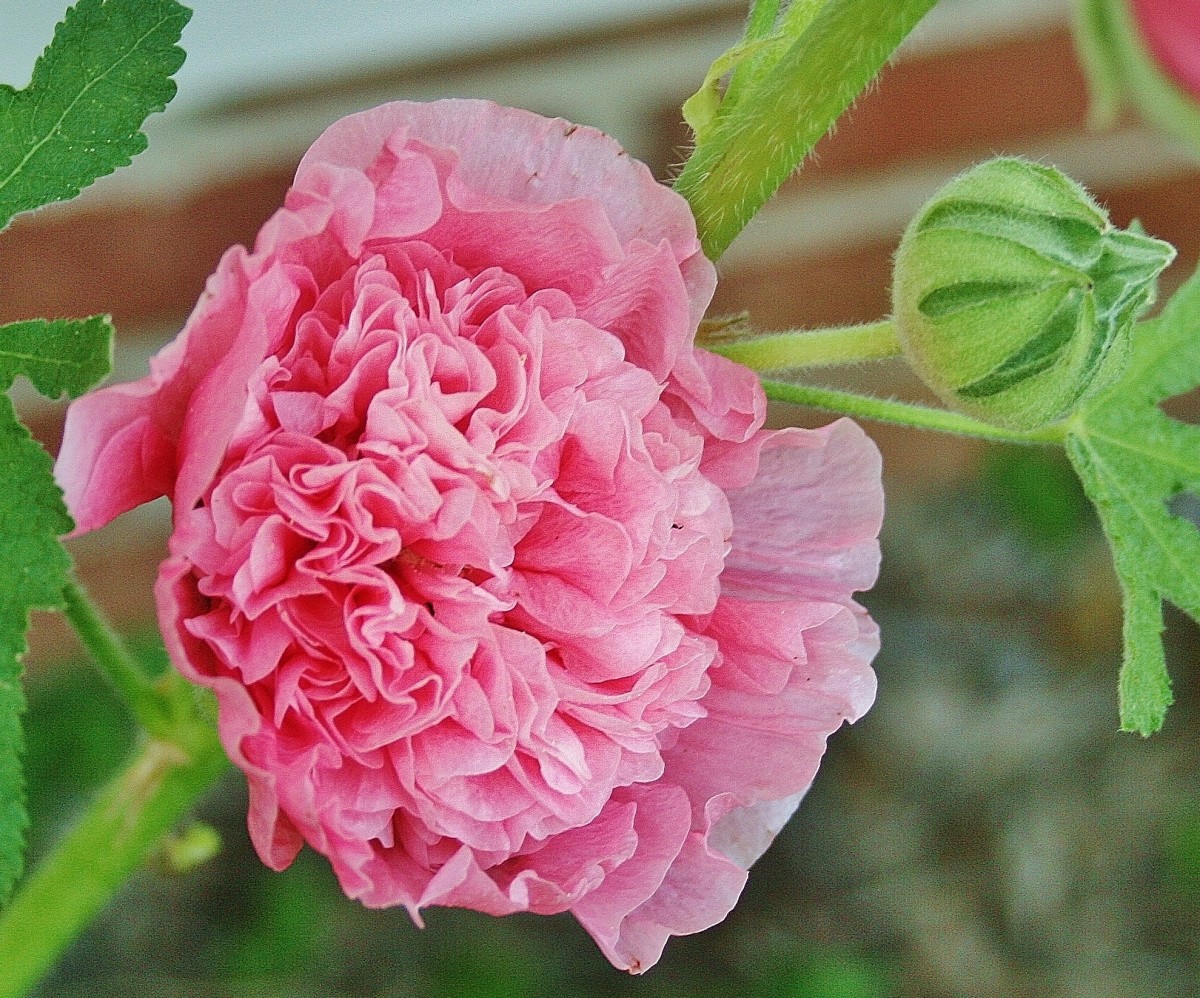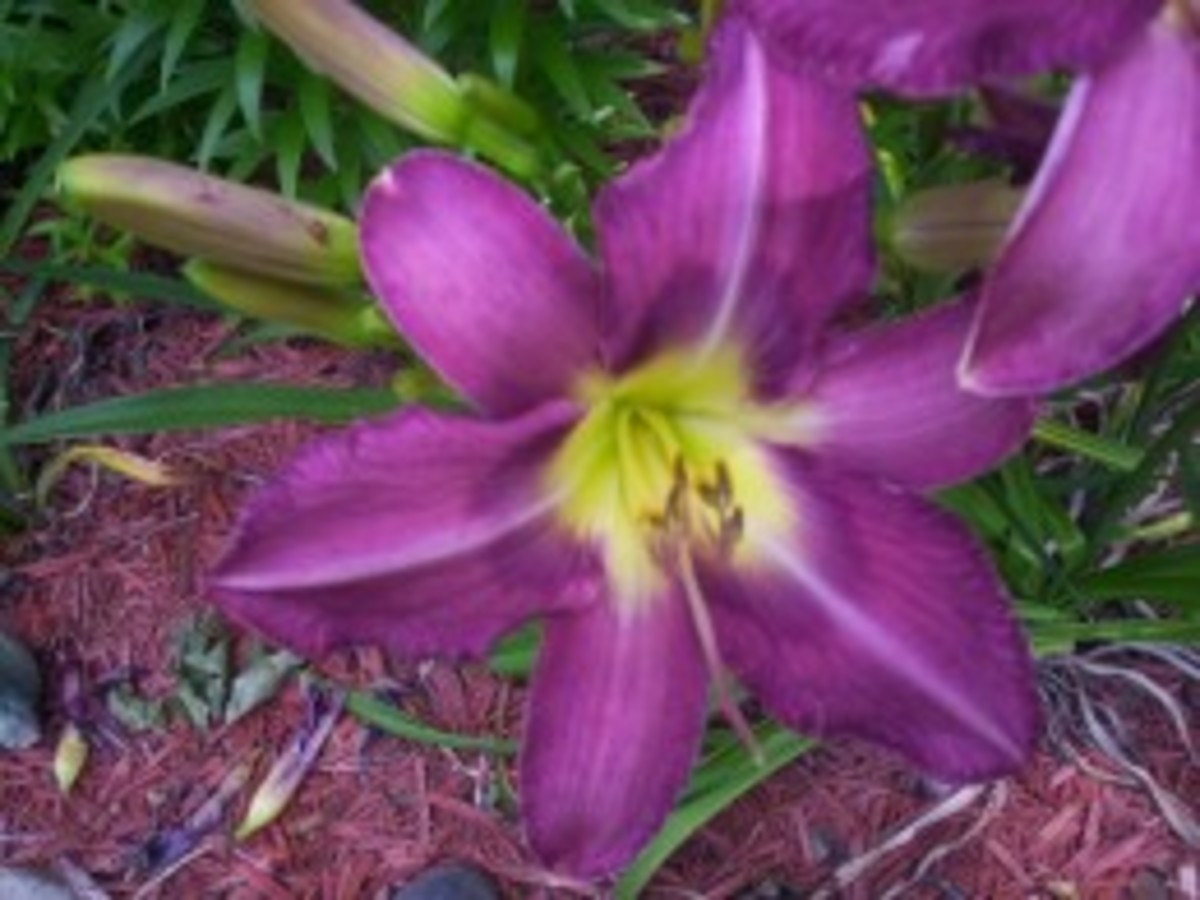How to Grow Hyacinth
Hyacinths
Hyacinth is the popular name for Hyacinthus, which is a type of flower grown from bulbs.
Some gardeners confuse hyacinths with what are called grape hyacinths, which are grown from seed. Those small flowers emerge early in the spring, but are of the genus Muscari, not Hyacinthus. That's something to keep in mind when making a decision concerning whether or not you want to plant that particular flower.
As to the meaning of the flower, there are those who consider Hyacinths a representation of rebirth. That is based upon the mythology surrounding the friendship between the god Apollo and Hyacinth, a young man who Apollo would throw a discus with.
Apparently Hyacinth one day was killed by a thrown discus from Apollo, whereby Apollo, according to legend, made the flower from the blood of Hyacinth.
As far as we can tell, hyacinths originated in Turkey and were popularized in the Netherlands when traders brought them to the region where the climate was highly conducive to growing the flower.
Photo of Purple Hyacinth
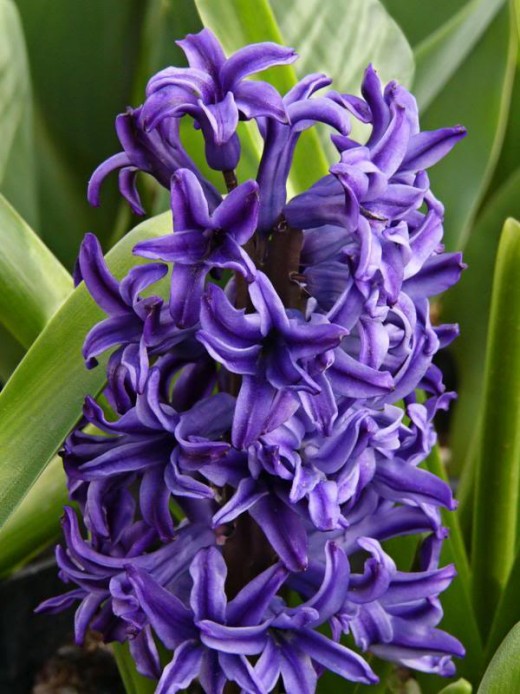
Growing Flowers Tips
- How to Grow Beautiful Zinnia Flowers
Zinnia is formally a member of Asteraceae family, or as most of us call it: the Aster family. They come in all different sizes, and can grow from about half a foot high to over three feet high, depending on the variety you choose. As for color,... - How to Grow Poppies
The poppy is formally known as papaveraceae, which includes just under 800 different species, and is found in most regions of the world, with the exception of the tropics, where there are very few of them. Although some poppies are small trees and... - How to Grow Extraordinary Petunias Throughout the Summer
For those who love to have beautiful and colorful homes and gardens throughout the summer, one of the easiest and most productive ways to do that is to plant petunias. There is no great amount of knowledge to have to be successful, and the... - How to Successfully Grow Chrysanthemums
Chrysanthemums or 'mums,' are a gorgeous flower that comes in literally hundreds of varieties, although most people associate them with the button-shaped ones bought near the end of the season to add color to the fading summer garden. These types...
Choosing Quality Hyacinth Bulbs
Before anything else, you want to be sure you start things off right when planting hyacinth bulbs, and the first step is to acquire quality bulbs in the first place.
In local centers this is important because bulbs may have sat around for some time and dried out. Be sure to check the bulbs individually to ensure they are still viable.
The opposite can be true as well. Mushy, wet, rotten bulbs aren't difficult to spot, but dry ones have to be checked a little closer.
Another general rule of thumb is almost always true, and that is the larger the bulb you pick, normally, the larger the plant will be. There are occasional exceptions, but for the most part if you want larger plants, choose the larger bulbs, as the vast majority of them will produce larger hyacinths.
When to Plant Hyacinth
Wherever you live, hyacinth bulbs should be planted in the fall season, about a month before the ground normally freezes.
The key to it is you want the hyacinths to establish root systems before the freeze comes. In some areas you may be able to plant them a little later and still get a strong root system, but a month is a good guideline to follow.
In hotter zones you should put the bulbs in the refrigerator for three weeks before you plant them in the latter part of fall season.
Where to Plant Hyacinth
Hyacinth do best when planted in the full sun, as they respond very positively to sunlight. Some gardeners say that they may grow well in the shade, but with bulbs in general, I've found very shady areas not to produce as well as those in the full sun, if that's the preferred environment of the specific plant.
It's hard to say though because of there being so many different circumstances from yard to yard with gardeners.
One thing for sure, hyacinth will produce well in the sun, while the shade offers a little more uncertainty as to results. I would go with the full sun if you're able to; or at least have partial shade for the bulbous flower.
A lighter soil is also best for hyacinth because they are a bulb and are prone to rot if there is poor drainage. If all you have is a heavier soil, you can adjust it by adding some organic material or plant your bulbs on a slight slope, where you are sure to get great drainage.
How to Plant Hyacinth
Hyacinths need to be planted fairly deep, from about six inches deep to eight inches deep. Plants should be spaced about six inches part. If you place them much closer together than that they won't fully develop as they are capable of.
Place some bulb fertilizer in the bottom of the hole before putting the bulbs in and cover with some soil so there is no direct contact. That will help boost the plant and flowers to reach optimum sizes.
When planting your hyacinth bulbs place them in the hole with pointed side up and the flat end down.
Creative Designs
One fun thing about bulbs is you can use some creativity when planting them because you have more control over the spacing and the consistency associated with them.
So you may want to think of some interesting variations or designs before simply placing them in the ground.
At minimum, hyacinth need to have a small bed for best effect. So be sure to buy about a dozen or so to get some nice color.
More Flower Growing Tips
- How to Grow Naked Lady or Amaryllis Belladonna
The naked lady is an amazing flower, which are also known as amaryllis belladonna, belladonna lily, Jersey lily, resurrection lily, magic lily, surprise lily or the March lily, depending on what part of the world you may live in. While naked... - How to Grow Periwinkle or Vinca Plants
In this article we'll talk about periwhinkle, or vinca major and minor, which are also known as blue buttons, dwarf periwinkle, wintergreen, ground ivy, creeping vinca, death's flower, myrtle or creeping myrtle, among others. The myrtle... - Growing Tips for Gorgeous Bleeding Heart or Lady in the Bath
Bleeding heart are among my favorite flowers, and these wonderful plants are relatively easy to grow, although there are several tips in this article which will help you with how to place your bleeding heart in the flower garden, and how to successfu - How to Grow Phlox Flowers
Phlox is a beautiful, small flower plant usually used as edging for gardens or yard landscaping, as well as ground cover for targeted areas. For those of you reading this who think phlox is really easy to grow, that's a misconception, as the... - Growing a Healthy Gardenia: Outdoors or Indoors
A gardenia, which is also known by the names Cape Jasmine, Gardenia jasminoides or Common Gardenia, is a flowering, evergreen shrub. Even though they are one of the harder flowering plants to grow, that doesn't stop people from trying over and...
Hyacinth Care
You can fertilizer your existing bed of hyacinths over the years by working in fertilizer. You do have to be careful not to damage the bulbs as you're doing it. Just sprinkle it on top and lightly work it in. Another safer option would be to use a liquid bulb fertilizer.
Once the plant is finished blooming, the plants should be allowed to grow until the leaves die. The plants need the the time to store up energy for the following year. Once the plant has died just cut off the plant at the base. Some gardeners just give them a little twist and a slight pull and the leaves come off.
Every couple of years hyacinth bulbs should be dug up, separated, and replanted.
You may need to stake your hyacinths if they're in an area that receives strong winds.
Over time you'll start to notice that your hyacinths flower heads are becoming thinner than they were. This is normal behavior for hyacinths, and it may be time to replace them with new bulbs.
Hyacinths and Dormancy
For those living where there are very cold winters, leaving the hyacinth bulbs in the ground is enough to trigger the dormancy they need.
In warmer climates gardeners may need to dig up their bulbs and refrigerate them in order to force dormancy on them. Let a full season of growth go by before making this decision, as you want to see how they respond before taking these steps.
If they don't grow well, then you can be sure you need to dig them up and cool them off during the winter season arrives.
Forcing Hyacinth Bulbs Indoors
Hyacinth is very easy to force indoors. All you need is a vase with a neck that is narrow enough to hold the bulb in place a little above the water line.
You don't want to place the bulb directly in the water, but you do want the root system to touch the water. Occasionally jiggle the vase to allow the water to touch the bottom of the bulb itself. Two or three times a day should be sufficient to do the job.
Turn the container towards the light throughout the time you're forcing the bulbs so it doesn't lean over too much to the side.
You can look at a good video of how to force hyacinth bulbs indoors below.
Hyacinths are worth the little effort of growing indoors because they have such a great fragrance.
Tips For Easily Forcing Hyacinth Bulbs To Bloom Indoors
Hyacinth
Hyacinths are a fantastic addition to the spring garden, and as just mentioned, can be forced inside the house for some great color and fragrance. They also make great cut flowers for the same reason.
With little in the way of care, they make for a wonderful flower to add to your spring garden, which will provide you with some beautiful fragrance through the middle of the spring season.

